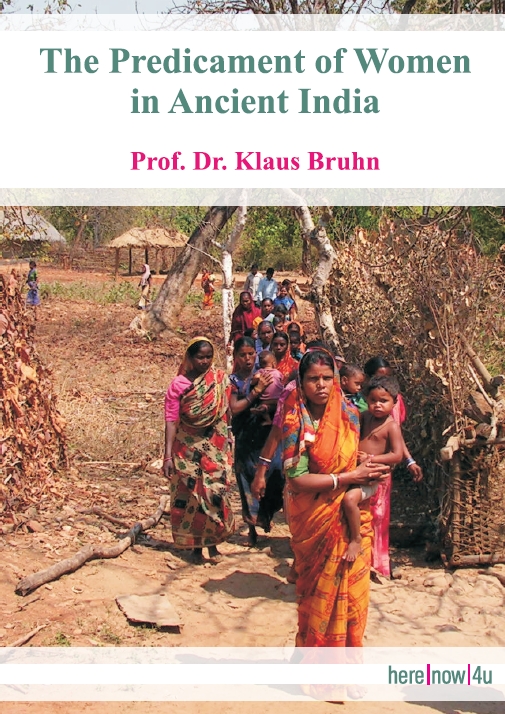Nuns are rare in Hinduism although there have possibly been fluctuations in their number in the course of time. The comparison with Jainism is useful. "While female renouncers predominate in Jainism, they are a marginal and small minority in Hinduism." (FOHR 159). In her study of Jaina nuns, S.E.FOHR has emphasized time and again the strict rules on chastity to be observed by Jaina nuns: The Jaina nuns are protected against their own impulses, and contacts between nuns and male persons (monks in particular) are subject to rigid restrictions.
The estimation in Hindu society is different. "... many Hindus also believe that women are overly sexual. There is a fear that the [female] renouncer life, unrestrained by the limits of marriage, would unleash their supposedly overwhelming sexual urges." (FOHR 159) It is assumed that women are not well-protected outside the family (no "perpetual tutelage" in Hindu ashramas), apart from the orthodox Hindu tradition that women must marry, must have children, must serve their husbands. LESLIE (320-321) accentuates the Hindu image of the dangerous female nature which can only be kept under control in the family (Tryambaka, see LESLIE). The alleged unusual sexual passion of women (even of old women) is perhaps an element of pan-Hindu or Pan-Indian pseudo-psychology.
We are here not concerned with female renouncers in general but with female saint-singers who had genuine religious experiences and whose life is religion. The religion is bhakti (devotion). A.K.RAMANUJAN analyses on pp.316-324 legendary (to some extent historical?) biographies of women saints in different parts of India (see 365-366, footnote 5).
In the case of women saints, RAMANUJAN details life stories in the form of a chart. "At each stage different saints follow different options (e.g. either marrying a mortal or refusing to do so); each choice leads to further choices." (319). The lives of the saints are mainly legendary, see the following specimens of alternatives I-IV (selection on p.318; running text on pp.320-321):
"Her god is her first love; she undergoes no conversion; // will marry no mortal; or (alternative skipped) // attains her god or escapes marriage// ["attains her god" continued:] by becoming a courtesan and getting her god as her lover... or through love and sacrifice... // ["through love" continued:) offering Him life or limb in worship (Rekavve) ["escapes marriage" continued"] by obstinately refusing to marry even Shiva in disguise (Goggavve)... or by being transformed into an unmarriageable [being] // male (Tilakavve)... or old woman (Avvai)...
Summaries: "She [the later woman saint] may attain god by a single-minded love, as Antal [Tamil] does, or win him by extreme forms of worship and sacrifice, as does Rekavve [Kanarese]... who uses a piece of her own flesh to complete the Lord's garland because she cannot find a red flower. Or she may obtain her divine lover as a courtesan: this is how Virasangavve (?) manages to win Shiva. Another possibility is to become transformed into an unmarriageable old woman, like Avvai, or into a male by God's grace, as Tilakavve does." (320).
Further summaries. [Denial of widowhood:] "Mira [Rajasthan] refuses suttee; Gauri and Venkamma refuse to shave their heads. It is as if they cannot be truly widowed, being married to God." (320-321). -- [Rebuking men for their sexual advances:] "Karaikkalammai [Tamil] turns into a skeleton before a lust-infatuated male. Mahadevi throws away her clothes and with them the investment in society and the division between male and female that differential clothing signifies; abandoning modesty, she walks naked, covered only by her tresses. Some of her most poignant poems are in defense of her nudity." (321).
Reversals: There is a fundamental difference between the male and the female saint. "The males take on female personae, they are feminine, yearning, passive toward a male god. Before God all men are women. But no female saint... takes on a male persona. It is as if, being already female, she has no need to change anything to turn toward God." RAMANUJAN 324.
"... [1] men wish to renounce their masculinity and to become as women; [2] upper-caste males wish to renounce pride, privilege, and wealth, seek dishonour and self-abasement, and learn from the untouchable devotee." (RAMANUJAN 316). Refer for "pride" (general) to § 12.6.
 Prof. Dr. Klaus Bruhn
Prof. Dr. Klaus Bruhn
 Title Photo Background:
Title Photo Background: